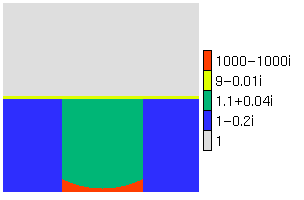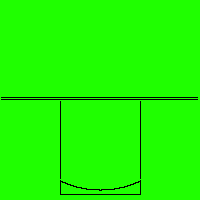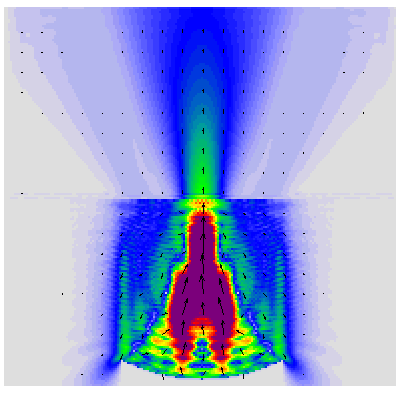Dielectric constant distribution

| A laser consists of a gain medium (here shown in green), containing electrons in an excited state. Light passing through the medium is amplified by stimulated emission; the electrons fall back to their ground state emitting photons in phase with the incident light. This may be modelled by using a dielectric constant with a positive imaginary part (by contrast a negative imaginary part leads to attenuation). Electrons are raised back to an excited state by a pumping source of radiation, such as a flash lamp. The gain medium is contained within a resonant cavity, consisting of two mirrors between which the light is reflected back and fourth. One of the mirrors is partially silvered, allowing a fraction of the radiation to pass through, which is where the coherent laser beam is emitted.
In this animation, a weak source of light initiates the laser, and light escaping from the sides of the cavity is absorbed. The intensity of the light grows exponentially. In a real laser, gain saturation would be reached when the rate of excitation of electrons by laser pumping is balanced by de-excitation of the electrons through stimulated emission. Thus the imaginary part of the dielectric constant would decrease to the point where the rate of amplification within the cavity exactly balances the rate of light being emitted through the partially silvered mirror. This simulation uses a constant imaginary part so cannot represent this effect, and the amplification continues without limit.
Wikipedia link: Laser |


